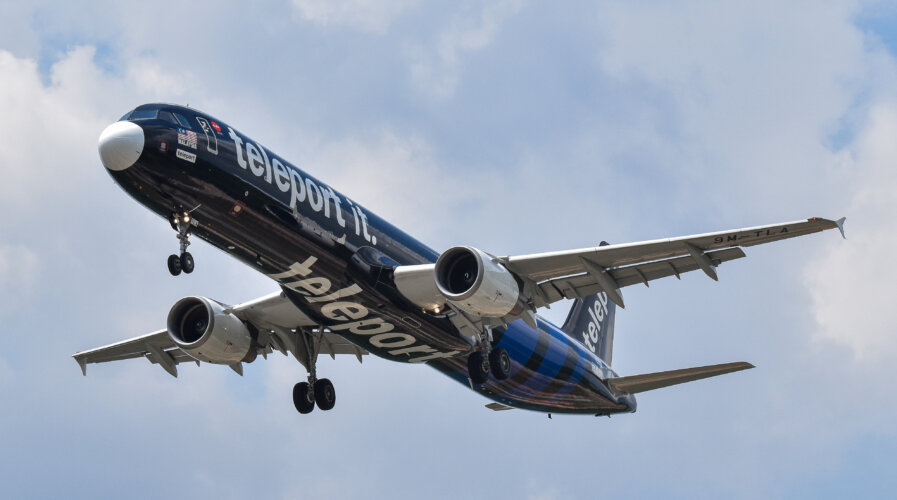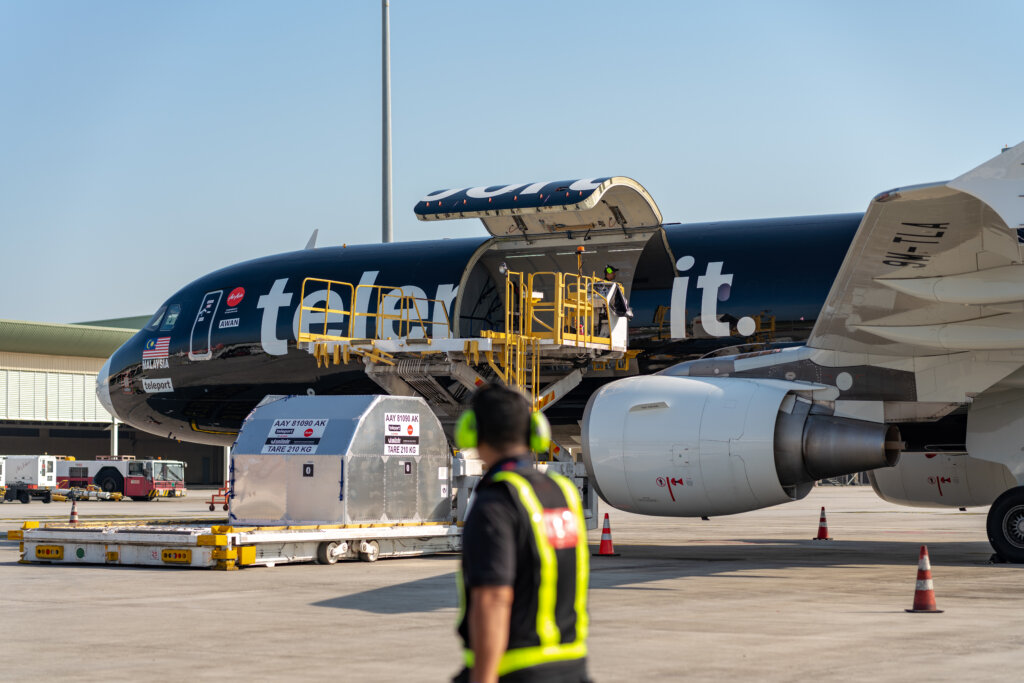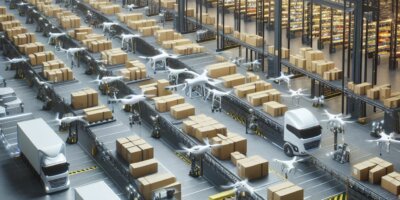
Teleport- still a long way to go in Southeast Asia.
Teleport’s quest for next-day e-commerce delivery in Southeast Asia
- Tech Wire Asia interviewed the CEO of Teleport on the potential, hurdles, and possibilities of next-day delivery in Southeast Asia.
- Pete Chareonwongsak dived deeper into the possibilities of regional logistics firms.
- In particular, he explained the potential of adapting to provide affordable 24-hour delivery services.
In the bustling landscape of logistics in Southeast Asia, Teleport is a potential game-changer, striving as it is to achieve 24-hour or next-day delivery at a lower cost. As the logistical arm of Capital A Bhd, Teleport wants to challenge the status quo of the industry.
But amid the region’s rapid economic expansion and escalating consumer demands, the critical question looms: can Teleport truly revolutionize the delivery landscape of Southeast Asia?
Teleport’s growth has been impressive. The company has rapidly expanded its presence across key markets in Southeast Asia, including Malaysia, Thailand, Indonesia, Philippines, India, Singapore, and China. This strategic expansion has allowed Teleport to tap into the region’s burgeoning e-commerce market, catering to the growing demand for seamless and efficient delivery services.
In a recent interview with Tech Wire Asia, Pete Chareonwongsak, the CEO of Teleport, shared insights into how the company is employing innovation to tackle future challenges in Southeast Asia.
How do you view the logistics industry in Southeast Asia amid rising demand for faster, cheaper deliveries?

CEO Pete Chareonwongsak. Source: Teleport
I think we do not have enough homegrown Southeast Asian logistics companies. When someone says Southeast Asia logistics, the names that typically come to mind are J&T and Ninja Van. The former initially started in Indonesia and is funded by the Chinese, so it’sexpanded to where 90% of its business now comes from China, not Southeast Asia. So it’s never really been born and bred here.
The same is true with Ninja Van, which started in Singapore and expanded to all the Southeast Asian countries. That’s the closest, but it’s funded by global venture capital.
That is why I’ve always felt we, Teleport, have an opportunity as we were born and raised here in Southeast Asia. Our DNA, infrastructure, and everything in between is here; we will not leave this part of the world.
So my understanding of Southeast Asia logistics is that many great companies come and go: their focus starts here but eventually moves elsewhere. Our mission has been to connect Southeast Asia better than anyone else, especially in performing next-day delivery.
Has Teleport proven its viability in its current market, or does it still have much to prove to establish a more substantial presence?
There’s a lot more. Based on statistics, we could reach about five million SMEs of a specific size in the region and give them access to our services. Everyone always talks about the SME opportunities in Southeast Asia, only to eventually realize that the money’s not there. But the opportunity is there. If you’re here long term, then at some point, you have to do something that allows collaborations to happen.
So, there are still opportunities in the long term. We currently serve at most 10,000 clients, but five million SMES are within the region. That means we have a long way to go in making it accessible.
Why do logistics companies frequently expand beyond Southeast Asia? What do they look for elsewhere that they need help finding here, especially given the region’s abundance of SMEs and MSMEs?
What is missing is the total addressable market. That’s why they go elsewhere because, undeniably, there are many larger markets that exist elsewhere today. So, at some point, when they’re funded a certain way or aim to grow a certain way, they need to go and find a large market to justify their reach and growth. That makes it hard for Southeast Asia-focused companies to stay here. There’s always something else, somewhere else.
We have an understanding of the region that some other companies lack, and our dedication and focus is here, today and tomorrow. So that’s what we see that they don’t see, perhaps making sense of their move to look elsewhere for markets. But if no one builds like we are doing, connecting Southeast Asia in a cheaper, faster, and better way, then SMEs will never have a real opportunity to grow.
Many of the Southeast Asian brands, e-commerce, and even supply chain operators never really have something that changes their capacity to grow. They have to flow with the market, still to this day. So we’ve got to find some angle to serve them, and that’s really where Teleport’s focus is.
Which is Teleport’s biggest addressable market at the moment?
It is China into Southeast Asia. The region is the triangle between Kuala Lumpur, Singapore, and Bangkok. The cross-border opportunities between these three countries, in particular, are mature.
Next-day delivery at a significantly reduced cost is a bold proposition. How is Teleport working towards this goal?
If you look at the top three reasons why somebody would be willing to use Teleport, the first is price, the second is reliability, and the third is speed. You have to hit all three, and that is very hard. But that’s what we’re trying to do. How do we bring the actual cost down? Then, once we’ve brought the cost down, how do we make money? People need to understand what it costs us to enable next-day deliveries.
Our view on life now is pretty simple: how do we get the cost down? And the way to do that is to not start the business model by buying a lot of stuff. So our first question was how do we build the business model we want without owning anything initially? The most important thing about next-day delivery is sending things between two borders. How do we do that in a next-day fashion? It’s got to go on a plane.
So, how do we put stuff on a plane? There are only two ways. One is you buy some aircraft, and FedEx, DHL, and UPS have bought hundreds of planes. So they’ve signed up for that visibility, and if we want to do that, we would have to compete against them over time with a better cost solution.
But what are other ways to put stuff on planes? Well, you and I fly everywhere, and every time a plane flies, a little bit of space is left over. That’s called the belly. How do we get access to that space across Southeast Asia? We need partnerships, and that’s where AirAsia came in. That’s how we built the business, off AirAsia’s belly. We wouldn’t be here without it, because it gave us the most extensive Southeast Asian network.
With those spaces overnight, we then had to figure out how to build a business model on that space, which is very cost-effective. Because passengers have paid for the seats and baggage allowances, we need to figure out how to bolt that little bit of space onto the rest of the business model, which is end-to-end delivery. Essentially, that was how we built the business. So it becomes much easier when you don’t own the thing.
The second thing is figuring out how to partner so you can gain access to the asset you need. The third is then how you tie it all together and do it.
Does Teleport have specific growth goals for its portfolio regarding the number of businesses?
We set a 24-month goal. Around two million e-commerce parcels a day are coming into Southeast Asia, and we want to capture most of that. For perspective, two million a day would be on par with our esteemed competitors. The amount is undoubtedly huge on a global scale, but we are looking towards that direction.
What role can technology play in facilitating the transformation of the logistics industry to meet the demands of faster and more affordable deliveries?
My view on addressing that this year is to slow down the growth slightly, which is shocking to most people. But if we don’t build these foundations with the right technologies, we won’t reach the two-year goal of two million deliveries, for example. So this is the year where we figure out the value of Gen AI or any AI solutions to our operations.

Source: Teleport
How many airplanes are in the fleet you use?
Airasia has 204 passenger aircraft, which will all be fully re-activated by the end of the first quarter. Teleport owns three freighter planes in Malaysia. On top of that, we have 30 airline partners based in Asia and Southeast Asia.
What changes do you anticipate in the competitive landscape if Teleport achieves its vision, and what adjustments might other logistics companies need to make in response?
A couple of things. Firstly, in this region, there are a lot of low-cost carriers that would eventually think about how to continue to improve their business. Like how Teleport built the company off AirAsia’s back, many other low-cost carriers will do the same – spin off a logistic business from their airline operations.
Even in China and Latin America, people have started to spin off their logistics business. So, the multimodal angle is going to be an essential trend.
https://www.linkedin.com/posts/teleportasia_black-box-ceo-pete-on-awan-launch-part-activity-7093153593406484480-GV61?utm_source=share&utm_medium=member_desktop
READ MORE
- 3 Steps to Successfully Automate Copilot for Microsoft 365 Implementation
- Trustworthy AI – the Promise of Enterprise-Friendly Generative Machine Learning with Dell and NVIDIA
- Strategies for Democratizing GenAI
- The criticality of endpoint management in cybersecurity and operations
- Ethical AI: The renewed importance of safeguarding data and customer privacy in Generative AI applications


